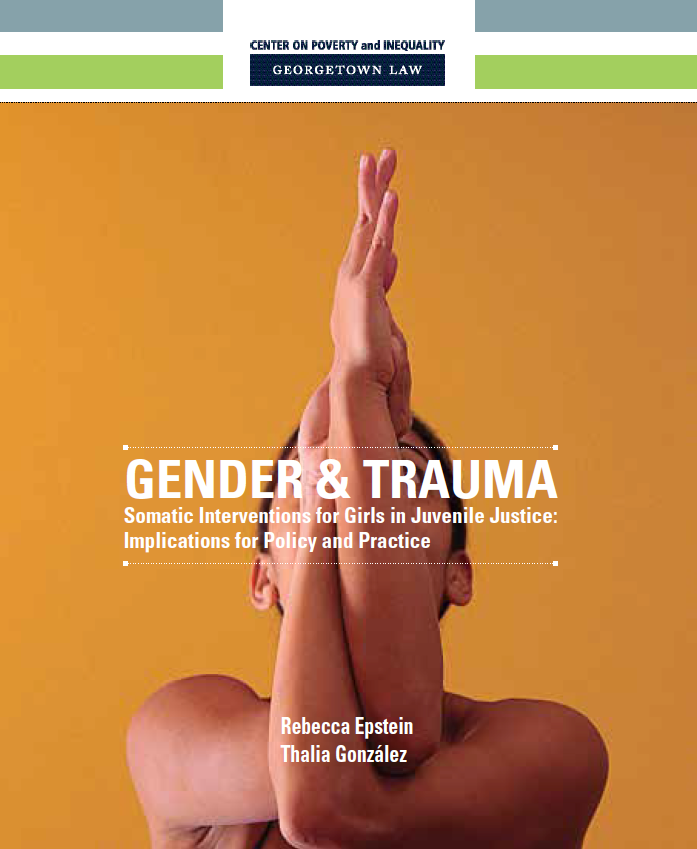
The Center published this report in 2017 to explore how yoga and mindfulness interventions can provide essential tools to girls in the juvenile justice system, including increased self-esteem and improved self-regulation. In the course of our research, one teacher noted that students improved their ability to present themselves to judges, despite the extremely stressful circumstances.
Complex childhood trauma can have long-term effects on a wide range of physical and mental health outcomes, including impaired self-regulation and diminished self-esteem. For system-involved youth who disproportionately experience trauma, these effects can be especially acute.
The impact of gender on the experience of trauma is less widely discussed, though it is significant in scope. In multiple studies, girls have reported higher rates of adverse childhood experiences than boys in all categories, especially girls in the juvenile justice system. Girls report sexual abuse at particularly disproportionate levels—and are more likely than boys to experience such violence within intimate relationships. Girls are also at greater risk of developing negative mental health outcomes from traumatic experiences. Trauma even has unique physical effects on the female brain. Finally, the multiple layers of girls’ identity—including the interplay among the factors of sex, race, ethnicity, sexual orientation, and gender identity—further shape their experience of trauma.
This report provides a foundational understanding of the relationship between trauma and gender—with a focus on system-involved girls—and provides an analysis of a vitally needed, promising approach: somatic interventions. In particular, the report maps the ways in which trauma-informed, gender-responsive, and culturally competent yoga and mindfulness programs can address the short- and long-term impact of trauma on girls in the juvenile justice system. Its analysis is based on two original pilot studies conducted by the Center on Poverty and Inequality, as well as an extensive literature review, and more than a dozen interviews with experts across the country. Drawing from these sources, the report defines the core components of somatic interventions for traumatized girls, presents data documenting positive effects, and makes specific policy and practice recommendations to increase access for system-involved girls.
Gender-responsive somatic interventions can be transformative for system-involved girls who have experienced trauma. Through the research, analysis, and recommendations presented in this report, the Center expands understanding of such programs and their healing potential for girls in the juvenile justice system.
This Report Presents These Key Findings:
- Trauma-informed, gender-responsive, and culturally competent somatic interventions can serve as critical components of physical and mental health approaches for system-involved girls by offering key coping strategies and skills vital for future development, as well as improved health outcomes. Demonstrated positive effects discussed in this report include:
- Improved self-regulation and other emotional development;
- Improved neurological and physical health; and
- Healthier relationships and parenting practices.
- The positive benefits of somatic interventions for girls give rise to two critical needs:
- Developing new programs that serve system-involved girls in juvenile justice facilities and residential placement programs; and
- Scaling up existing programs, with a focus on sustainability.
- Conducting additional research to develop a more comprehensive picture of how juvenile justice systems can fully integrate sustainable, trauma-informed, gender-responsive, and culturally competent somatic interventions to address girls’ trauma and support their resilience.
- Additional research should be conducted to develop a more comprehensive picture of how juvenile justice systems can fully integrate trauma-informed, gender-responsive, and culturally competent somatic interventions to address girls’ trauma and support their resilience.


